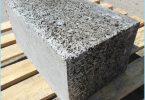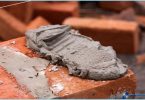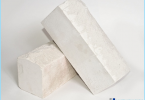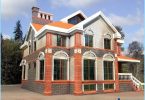The contents
For many years, the most popular material used in the construction of residential houses is brick. Also it is actively used in the construction of interior partitions, various fencing and other architectural elements. Built surface of brick are not only high strength and resistance to external damage, but also a beautiful appearance.
In order to built the structure of brick was a solid, it is very important to prepare a good mortar for masonry. This material is attached to the bricks when laying.
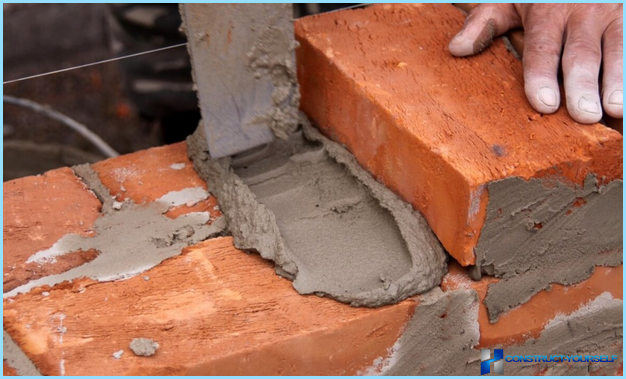
The composition of the mortar for bricklaying ↑
Depending on the ratio of basic components, solutions can be:
- lime;
- lime-cement;
- cement;
- clay-cement.
Let us consider in more details each of the options.
A mixture of cement. This is the most common variant of the mortar for bricklaying. This type of mixture is characterized by high strength, density and good moisture resistance. Usually it is used in the construction of multi-storey and single-storey buildings and for the construction of underground garages and ground floors of brick.
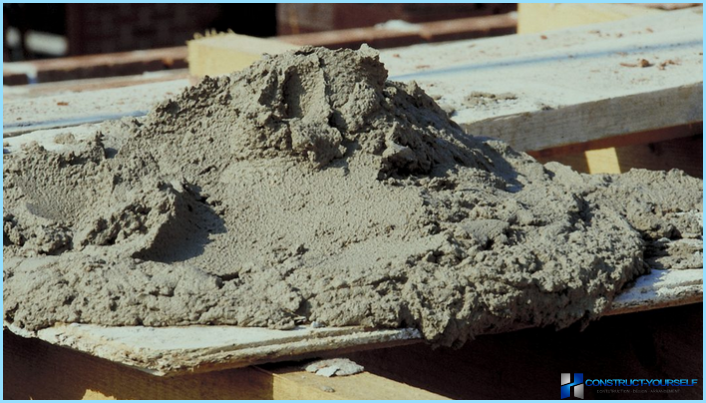
A solution of lime. It is characterized by high flexibility and very low shrinkage. Such material is very easy to operate, it is simple enough to apply. The mixture is perfectly bonded to various surfaces used in the construction of buildings and structures. It should be noted that this type of solution allows you to build a wall with higher heat preservation than the surface laid with ordinary cement mortar.
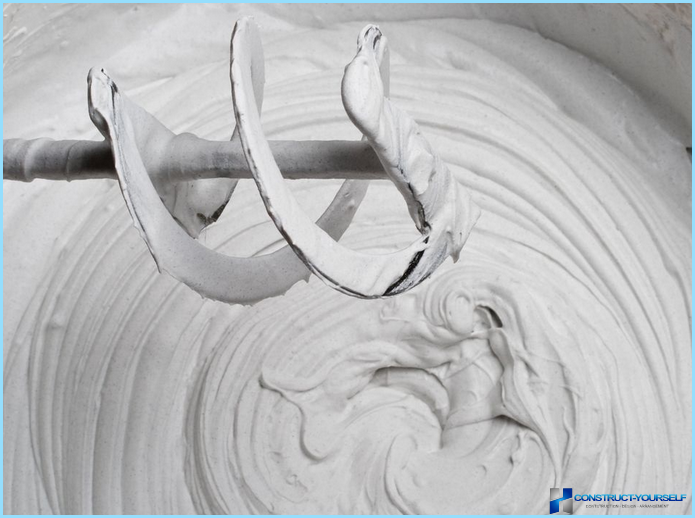
A mixture of cement-lime. This type of building material widely used in the construction of ground and underground architectural constructions. In the same way as a lime mixture, cement-lime mortar is very easy to style, it has a high resistance to frost and mechanical loads.
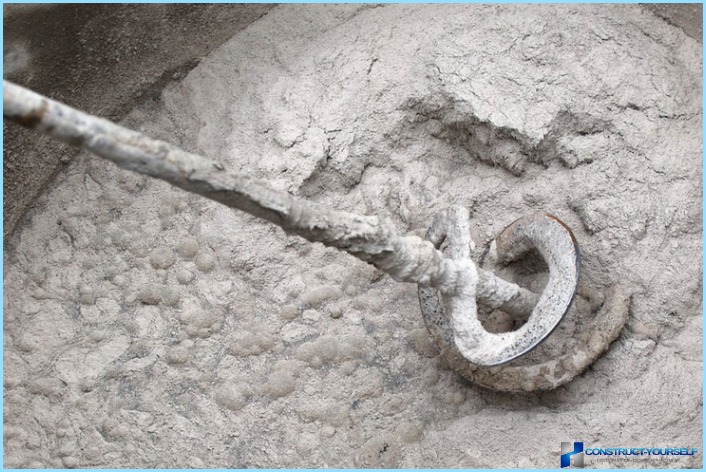
A mixture of clay and cement. Despite the fact that strength indicator in this type of construction material less than other solutions, it is also actively used in the construction of the house. A clay-cement mixture are attracted to the low cost, good plasticity, resistance to frost and long-life already laid masonry. It is suitable for brick and pottery. The main thing is to thoroughly mix the solution and to ensure that the clay used was cleared of debris and any impurities. Also, the clay must be crushed to the required fraction.
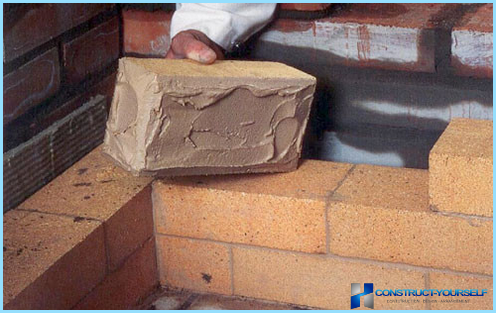
The proportions of the components of the solution ↑
Depending on the scope of use, the solution contains those other ingredients, mixed in certain proportions. As practice shows, the most popular material for masonry bricks is a cement-sand mortar. It is easy to cook, it is easy to use and does not require the addition of special components. This clutch is able to withstand very severe mechanical loads, is not destroyed under the influence of water and frequent changes in temperature air.
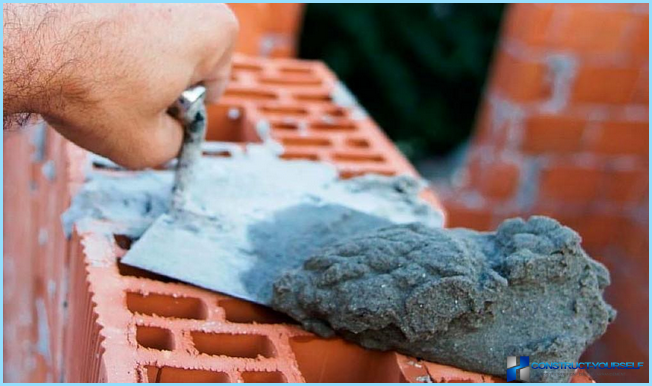
In the specialized literature you can clearly see in the table the ratio of components for preparation of cement mortar, but only by experience you can identify the best of them:
- Brand 100 includes one part of cement M 400 and four parts sand. The solution is more plastic, it adds a special substances, plasticizers, dyes are sometimes used.
- For masonry of heavy stone or brick it is better to use a more dense mixture. She kneaded on the basis of the proportions one part cement M 500 and five parts sand. This type of solution is often used for laying brick foundations.
- To prepare the solution, which has high strength and excellent waterproofing properties, you will need one part cement M 400 and two parts of clean sand. It usually used for masonry or clinker brick.
- Waterproofing sewer pipes, laying of brick walls for manholes or shafts of water pipes is carried out with the use of a mixture of brand M75. To prepare it you need, to connect one part of cement M 400 and six parts of sand.
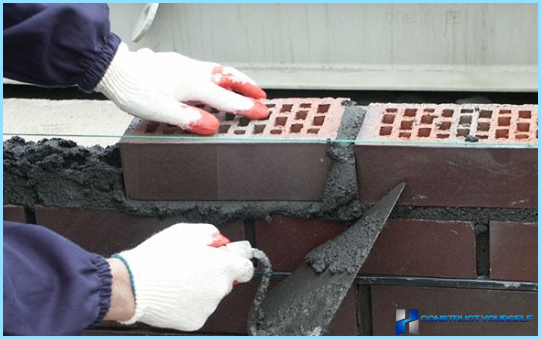
Transcript of marking cement and mortar ↑
For beginners in the construction business is very important to understand unusual signs, letters and numbers that the manufacturer puts on the package of cement and ready-mix for laying. Understanding these symbols is much easier to select the building material, select suitable components for mixtures prepared independently and correctly calculate the maximum rate of the load on the already laid surface.
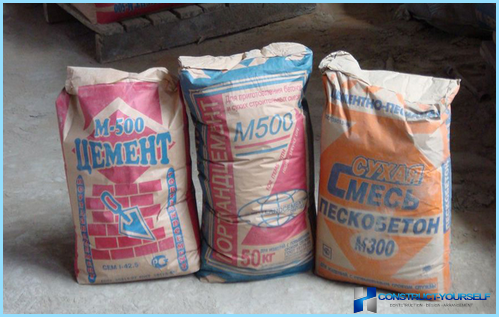
Usually the manufacturer puts on the packaging of cement. It can be denoted as M100, M400, M500. The numbers indicate the maximum load that can withstand the laid surface is based on 1m?. These figures are derived by research in the laboratories, so in practice the properties of mortar are slightly different from those indicators which are indicated by the manufacturer.
Another important factor, whose value need to understand is the presence of a mixture of any additives. They are usually labeled alpha. For example, the letter D and the number beside it indicates that this type mixes to be additional material in a certain proportion.
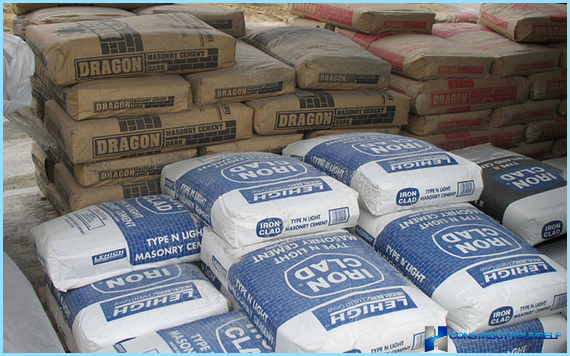
How to prepare a solution ↑
In order to prepare quality material for bricklaying, there is little to choose wisely its composition, it is necessary to properly carry out the kneading. For these purposes a special betonomeshalka camera. If the scope is small, then for kneading you can use manual tools: any container, shovel and electric, construction mixer.
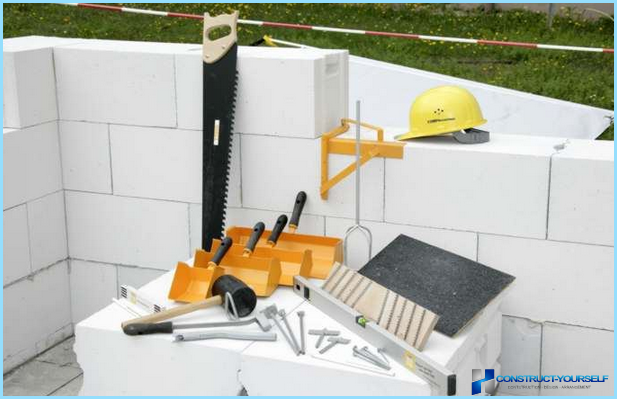
Experts note that in mixing a solution is very important to maintain the desired proportion of components. The mixture should be fluid enough to fill all the gaps, but the solution should be to measure plastic and elastic, in order not to spread when laying bricks. The most easiest way of checking the quality of the mixture to the surface with your finger. Must remain distinctive mark, pit, the walls of which do not spread and are not filled with water.
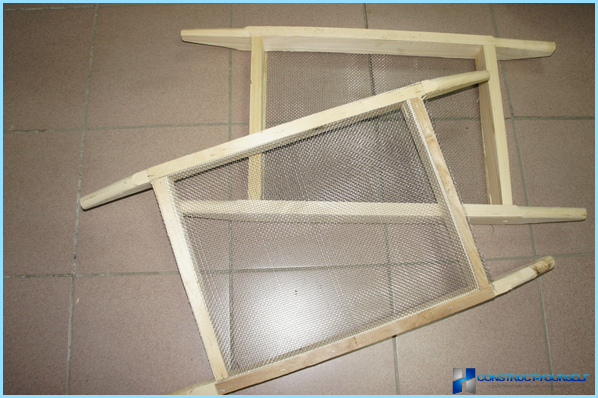
First in the mixer load the dry ingredients, and then you need to add water. First time half the necessary amount, and after two minutes of stirring the mixture gradually adding the remaining water. The mixture must be well mixed to avoid lumps.
A mixture of quite a long time must maintain its plasticity. For this purpose in its structure add slaked lime. It helps to keep the mixture the right consistency for up to six hours. Also, hydrated lime can increase the rate of plasticity of the mixture, as well as its ability to carefully fill even the smallest cracks. The only thing that you must consider when working with this solution, it is the inappropriateness of the application of the composition when laying wall that will be in constant contact with water.
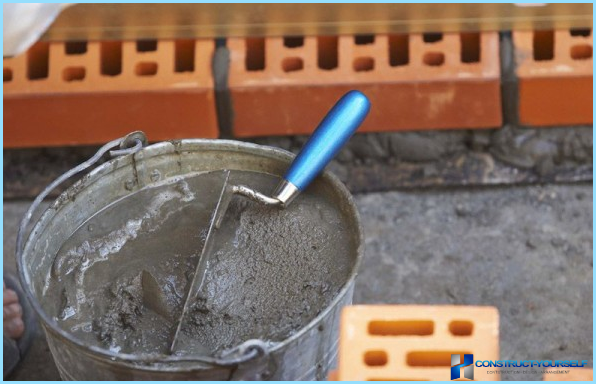
How to calculate the flow rate of the solution on masonry ↑
As practice shows, the most popular solution of cement-sand form has the following flow rates: on brickwork with a length of one meter and thickness of one brick requires ≈ 80 gallons of solution. If the clutch is in a half brick, one square meter of masonry, you must prepare about 120 liters of solution.
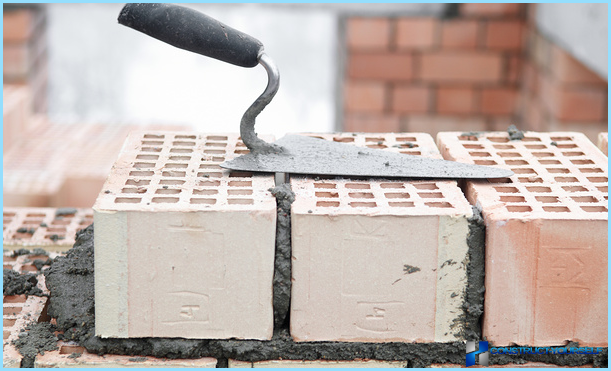
Conclusion ↑
Proper selection of type of cement and other components, properly conducted batch ensures that brick claque bude durable, high-quality and durable. It is important to consider the purpose of the solution, because changing the ratio, you can change its function and properties. Given the nuances of mixing and expert advice you can mix a solution that is easy and pleasant.
To make good mortar for brick masonry is very important to use high-quality cement. What rules guide professionals in the selection of cement, we learn in the next video

